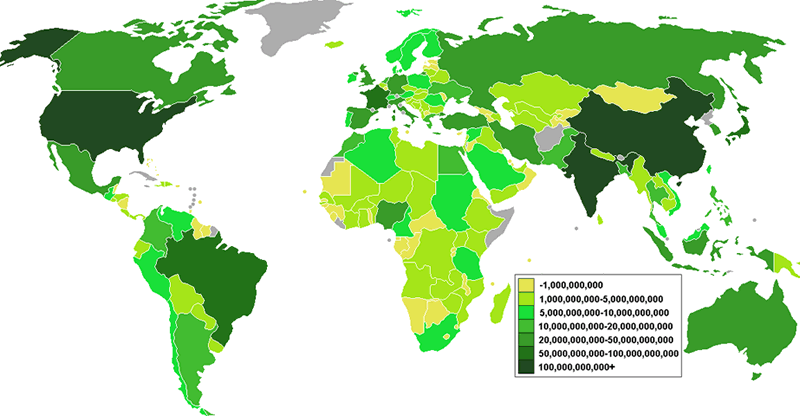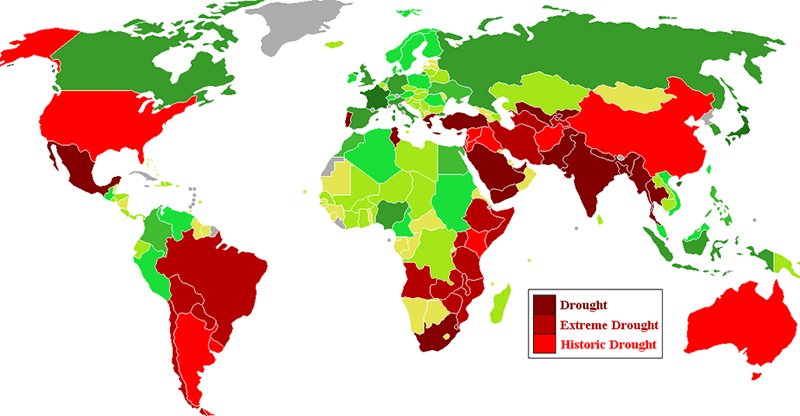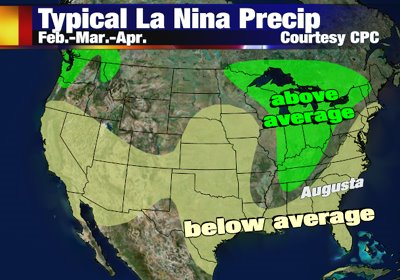http://www.asiasentinel.com/index.php?option=com_content&task=view&id=1848&Itemid=351
Asia Sentinel, 29 Apr 2009, Alice Poon
Are We Neglecting the Food Crisis?
If the global food shortage crisis has made consumers in developed countries feel the sting of surging food prices, it can at the same time be a direct cause of malnutrition and starvation for people in poor countries.
Some economists tell us that we are in for a protracted deflationary period. Others tell us that rampant inflation is what we should expect. But a trip to the supermarket these days does tell us that retail food prices have generally shot up by double-digit percentages. Yet consumer price indices that governments (at least those in North America) announce seem incredibly tame. While consumers in developed countries are still silently bearing food price surges with a reluctant grin, the picture will not be pretty if their income levels keep deteriorating and unemployment keeps rising.
However, for many poor country folks, including those in Asia, the food price spike translates into something much starker than a thrifty choice of home-cooked meals over dining out – it is a matter of going hungry or death by starvation.
A study by the UN Economic and Social Commission for Asia and Pacific confirms that poverty is the leading cause for food insecurity in the Asia-Pacific region, which is home to 62 percent of the world’s undernourished.
A friend has sent me a link to a short film that speaks for itself. Here is the link for sharing:-
http://www.cultureunplugged.com:80/play/1081/Chicken-a-la- Carte
In 2008 we were bombarded with news reports about a serious global food shortage crisis. Unfortunately that crisis has not gone away and does not seem to be going away any time soon, according to an article titled “Is the global food crisis over?” on Voxeu.eu, which is an economic policy research portal backed by the European Union.
According to the article, despite international grain prices having come down from their peaks in 2008, they remain high when compared with their historical averages:-
- rice in March 2009 is 49% above its 10-year average;
- maize in April 2009 is 43% above its 10-year average;
- soybean in March 2009 is 36% above its 10-year average;
- wheat in April 2009 is 31% above its 10-year average.
Even the price of oil (Brent crude), despite its dramatic decline from its July 2008 peak, is still some 20% higher than its 10-year average.
Based on a report by the Food and Agricultural Organization of the United Nations (“FAO”), "While in developed countries the 2008 cereal output is estimated 12.3% higher than in the previous year, in developing countries the expansion was just 2.3%. This mainly reflects a weak supply response in Asia, accounting for three-quarters of the developing countries’ production, where the aggregate cereal output remained virtually unchanged."
That is why the Asia Development Bank has predicted that Asia may be just one supply shock away from another round of food price spirals, according to the Voxeu article.
"Accounts and news reports from many parts of the world indicate that food (and even fertilizer and transport) prices have remained 'sticky' in many countries, suggesting that food prices faced by low-income and poor consumers are still relatively high…………… The FAO (2009b) also reports that, based on the national food prices information they have collected so far, poorer countries have experienced smaller declines in food prices in recent months. Many poor and low-income people – notably children and women – continue to be adversely affected by high food prices."
Another adverse factor is the sharp volatility in commodity and oil prices which has led to delays in or cancellations of investments in enhancing agricultural productivity, thus stunting the incentives to boost food supplies.
Topping it all is the global financial credit crunch and economic meltdown which on the one hand is preventing low-income farmers from boosting agricultural production, and on the other has monopolized world governments’ attention as they bury their heads in spinning out stimulus packages, leaving little or no attention span for the food crisis.
But, as the authors of the article warn, inaction by governments will only sow more seeds for future crises.
--------------------------
Latest updates at Singapore News Alternative:
1. Are We Neglecting the Food Crisis?
2. Swiss Air Exit From Singapore
3. Singapore opens consulate in Batam
4. Singtel leads international race for bank contract
5. eBay India & Singapore get seller discounts
6. Singapore unveils plan to improve workplace safety, health
7. Alzheimer's, asthma, cancer, malaria and TB focus of new Singapore grants
8. Big Singapore deep-tunnel reuse project honored
9. Singapore raises flu alert level to yellow
10. Swine Flu Extends Reach, Sickens Hundreds in New York
11. New Zealand confirms more swine flu infections
Latest videos added:
1. George Yeo Met With US State Sec Hillary Clinton on 27 Apr 09
2. Inside Story - The swine flu threat - 28 Apr 09
3. Swine Flu Virus Has Spread - Bloomberg
4. Singapore's 2009 Growth - Bloomberg
.
Asia Sentinel, 29 Apr 2009, Alice Poon
Are We Neglecting the Food Crisis?
If the global food shortage crisis has made consumers in developed countries feel the sting of surging food prices, it can at the same time be a direct cause of malnutrition and starvation for people in poor countries.
Some economists tell us that we are in for a protracted deflationary period. Others tell us that rampant inflation is what we should expect. But a trip to the supermarket these days does tell us that retail food prices have generally shot up by double-digit percentages. Yet consumer price indices that governments (at least those in North America) announce seem incredibly tame. While consumers in developed countries are still silently bearing food price surges with a reluctant grin, the picture will not be pretty if their income levels keep deteriorating and unemployment keeps rising.
However, for many poor country folks, including those in Asia, the food price spike translates into something much starker than a thrifty choice of home-cooked meals over dining out – it is a matter of going hungry or death by starvation.
A study by the UN Economic and Social Commission for Asia and Pacific confirms that poverty is the leading cause for food insecurity in the Asia-Pacific region, which is home to 62 percent of the world’s undernourished.
A friend has sent me a link to a short film that speaks for itself. Here is the link for sharing:-
http://www.cultureunplugged.com:80/play/1081/Chicken-a-la- Carte
In 2008 we were bombarded with news reports about a serious global food shortage crisis. Unfortunately that crisis has not gone away and does not seem to be going away any time soon, according to an article titled “Is the global food crisis over?” on Voxeu.eu, which is an economic policy research portal backed by the European Union.
According to the article, despite international grain prices having come down from their peaks in 2008, they remain high when compared with their historical averages:-
- rice in March 2009 is 49% above its 10-year average;
- maize in April 2009 is 43% above its 10-year average;
- soybean in March 2009 is 36% above its 10-year average;
- wheat in April 2009 is 31% above its 10-year average.
Even the price of oil (Brent crude), despite its dramatic decline from its July 2008 peak, is still some 20% higher than its 10-year average.
Based on a report by the Food and Agricultural Organization of the United Nations (“FAO”), "While in developed countries the 2008 cereal output is estimated 12.3% higher than in the previous year, in developing countries the expansion was just 2.3%. This mainly reflects a weak supply response in Asia, accounting for three-quarters of the developing countries’ production, where the aggregate cereal output remained virtually unchanged."
That is why the Asia Development Bank has predicted that Asia may be just one supply shock away from another round of food price spirals, according to the Voxeu article.
"Accounts and news reports from many parts of the world indicate that food (and even fertilizer and transport) prices have remained 'sticky' in many countries, suggesting that food prices faced by low-income and poor consumers are still relatively high…………… The FAO (2009b) also reports that, based on the national food prices information they have collected so far, poorer countries have experienced smaller declines in food prices in recent months. Many poor and low-income people – notably children and women – continue to be adversely affected by high food prices."
Another adverse factor is the sharp volatility in commodity and oil prices which has led to delays in or cancellations of investments in enhancing agricultural productivity, thus stunting the incentives to boost food supplies.
Topping it all is the global financial credit crunch and economic meltdown which on the one hand is preventing low-income farmers from boosting agricultural production, and on the other has monopolized world governments’ attention as they bury their heads in spinning out stimulus packages, leaving little or no attention span for the food crisis.
But, as the authors of the article warn, inaction by governments will only sow more seeds for future crises.
--------------------------
Latest updates at Singapore News Alternative:
1. Are We Neglecting the Food Crisis?
2. Swiss Air Exit From Singapore
3. Singapore opens consulate in Batam
4. Singtel leads international race for bank contract
5. eBay India & Singapore get seller discounts
6. Singapore unveils plan to improve workplace safety, health
7. Alzheimer's, asthma, cancer, malaria and TB focus of new Singapore grants
8. Big Singapore deep-tunnel reuse project honored
9. Singapore raises flu alert level to yellow
10. Swine Flu Extends Reach, Sickens Hundreds in New York
11. New Zealand confirms more swine flu infections
Latest videos added:
1. George Yeo Met With US State Sec Hillary Clinton on 27 Apr 09
2. Inside Story - The swine flu threat - 28 Apr 09
3. Swine Flu Virus Has Spread - Bloomberg
4. Singapore's 2009 Growth - Bloomberg
.











